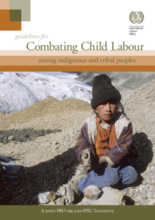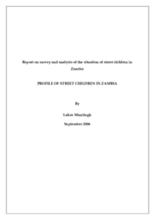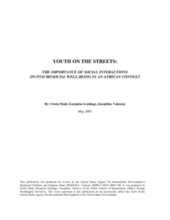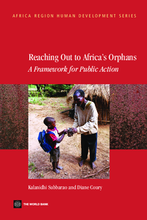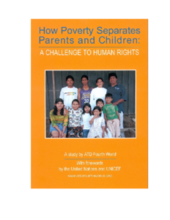Displaying 181 - 190 of 216
Profiles street children in Zambia. Outlines good practices and priorities for use in the development, coordination, and implementation of a national strategy.
A literature review of HIV vulnerability in Vietnamese children. Includes analysis of current gaps in related research.
Guidelines to address the specific needs and rights of indigenous children in the context of child labour. Includes a comprehensive list of follow-up resources.
Profile of street children in Zambia. Emphasis on generating data for policy development. Collected data analyzed at a national level but datasets are available for further analysis in terms of geographical location, gender, or other population sub-sets.
Research on the psychosocial factors contributing to distress of children living and working on the streets in Ethiopia. Highlights the importance of facilitating social relationships and connectedness. Suggests intervention constructs and measures based on the Psychosocial Child Well-being model.
Examines current conceptual and practical issues relating to reunification of street children with their families. Includes guidelines for organisations operating or starting reunification programmes and suggests directions for future research.
A detailed book providing evidence-based guidelines for approaches and interventions to best mitigate the various risks confronted by OVC.
General recommendations for addressing street children in the context of juvenile justice from the book An Outside Chance: Street Children and Juvenile Justice – An International Perspective. Targeted at governments and other actors in the justice system. Includes a tabular breakdown of which actors should collaborate with government in addressing each specific recommendation.
An executive summary of lessons learned on preventing family separation in poverty stricken communities. Brief case studies from Guatemala, Haiti, Philippines, United States and Burkina Faso.
The study provides an overview of current policies and programs that address the educational needs of street children as well as an analysis of their needs. It identifies best practices, gaps, and challenges in education and makes recommendations for government policy and programs.


